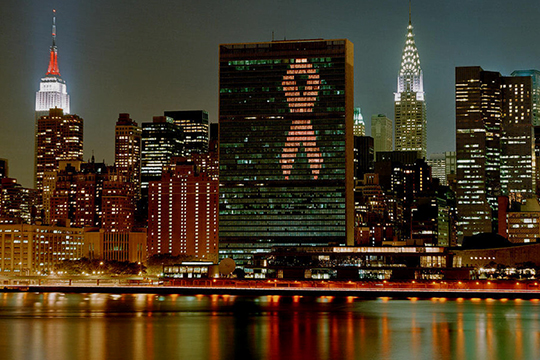In June 1981, scientists in the United States reported the first clinical evidence of a disease that would later become known as acquired immunodeficiency syndrome, or AIDS. Its cause, the human immunodeficiency virus (HIV), was identified in 1983.
Since the start of the epidemic around 84.2 million people have acquired HIV and around 40.1 million people have died of AIDS-related illnesses. In 2021, there were 38.4 million people living with HIV. 54% of all people living with HIV were women and girls.
HIV is found in the bodily fluids of a person who is living with HIV—blood, semen, vaginal fluids and breast milk. It can be transmitted through unprotected sexual contact. It is also spread among people who inject drugs with non-sterile needles–syringes, as well as through unscreened blood products. It can spread from mother to child during pregnancy, childbirth or breastfeeding if the mother is living with HIV.
Antiretroviral treatment
Over the ensuing decades, the rate of people becoming HIV-positive soared dramatically, as did the rate of fatalities. But eventually, new antiretroviral treatment began to extend the lives of those who were living with HIV. 28.7 million people were accessing antiretroviral therapy in 2021. At the same time, even though the number of people becoming HIV-positive has declined, there are still an unacceptably high number of people acquiring HIV and AIDS-related deaths each year. In 2021, around 1.5 million people became HIV-positive and 650 000 people died of AIDS-related illnesses.
The number of people becoming HIV-positive has fallen by 32% since 2010 (by 52% among children) and AIDS-related deaths have fallen by 68% since the peak in 2004.
Gender inequalities and harmful gender norms are holding back the end of AIDS
The effects of gender inequalities on women’s HIV risks are especially pronounced in sub-Saharan Africa, where women accounted for 63% of new HIV infections in 2021. Harmful masculinities are discouraging men from seeking care. While 80% of women were accessing treatment in 2021, only 70% of men were on treatment. Six in seven new HIV infections among adolescents aged 15–19 years are among girls in sub-Saharan Africa. Girls and young women aged 15–24 years are twice as likely to be living with HIV than young men.
UNAIDS
The United Nations family has been in the vanguard of this progress. Since 1996, its efforts have been coordinated by UNAIDS—the Joint United Nations Programme on HIV/AIDS. UNAIDS is an innovative joint venture of the United Nations family, which brings together the efforts and resources of 11 United Nations system organizations to unite the world against AIDS. These are: UNHCR, UNICEF, WFP, UNDP, UNFPA, UNODC, UN Women, ILO, UNESCO, WHO and the World Bank.
Goals to end AIDS
Millennium Development Goals
In 2000, at the General Assembly’s Millennium Summit world leaders set specific goals to stop and reverse the spread of HIV. Heads of state and representatives of governments issued the Declaration of Commitment on HIV/AIDS, which set out a series of national targets and global actions to reverse the epidemic. The Global Fund to Fight AIDS, Tuberculosis and Malaria was created in 2002. And in 2006, the General Assembly held a high-level review of progress made since its special session, adopting a 53-point Political Declaration on the way towards universal access to HIV prevention, treatment, care and support services.
World leaders gathered in New York in June 2011 for the General Assembly High-Level Meeting on AIDS. The promises they made defined the next steps in the global AIDS response.
In 2015, the world delivered on the AIDS targets of Millennium Development Goal 6—halting and reversing the AIDS epidemic. This remarkable achievement marks the first time a global health target has been met and exceeded. By mid-2015, the number of people accessing antiretroviral therapy reached nearly 16 million—double the number just five years earlier.
The world has halted and reversed the spread of HIV. The epidemic has been forced into decline. Now the response is going one step further—ending the AIDS epidemic by 2030.
Sustainable Development Goals
Ending AIDS by 2030 is an integral part of the Sustainable Development Goals (SDGs), which were unanimously adopted by United Nations Member States in 2015. The lessons learned in responding to HIV will play an instrumental role in the success of many of the SDGs, notably SDG 3, good health and well-being, and the goals on gender equality and women’s empowerment, reduced inequalities, global partnerships and just, peaceful and inclusive societies.


